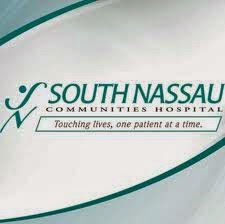 South Nassau Communities Hospital is sending out 4000+ letters to patients recommending they be tested for hepatitis B, C, and HIV due to a potential risk of infection from an insulin pen.
South Nassau Communities Hospital is sending out 4000+ letters to patients recommending they be tested for hepatitis B, C, and HIV due to a potential risk of infection from an insulin pen.
An insulin pen is typically used for people with diabetes and is a pre-filled syringe meant to dispense insulin in a single patient. Because of potential backflow of a patient’s blood into the pen cartridge after injection, using a pen or cartridge on multiple patients may expose them to blood-borne infections.
The hospital spokesman said no one was observed re-using the insulin pen reservoir on more than one patient, but a nurse was heard saying it was all right to do so. A report was then sent to the New York Department of Public Health. The hospital has stated the risk of infection is “extremely low.” Out of an abundance of caution, the hospital is recommending that patients receiving the notification be tested for HBV, HCV, and HIV. While the testing is voluntary, it is recommended.
The hospital said it has since banned the use of insulin pens and permits only the use of single-patient-use vials.
The state Department of Health said that in 2013, three health facilities reported potential insulin pen re-use: two state-regulated facilities and the Veterans Administration’s medical center in Buffalo.
It sounds to me that this is a pretty minimal risk. I would imagine the hospital took a very firm stance with the nurse when they over heard her say that it was acceptable use. Hopefully she told the truth and she (or any of the nurses) hadn’t actually done it.
The situation is worth monitoring however, as anytime there is a potential hospital blood exposure to 4000+ people.
I encourage everyone to use the comments section below!
- Lance D. Presser has a PhD in microbiology and immunology and is a public health laboratorian.
- Hire Lance for any of your microbiology, virology, teaching, editing, grant writing, or public health consulting needs.
- Follow Lance @ldpsci
- Science Macrocosm Forum
This entry was originally published on Lance’s Science Macrocosm March 16. It is reprinted with permission.







Comments
Comments